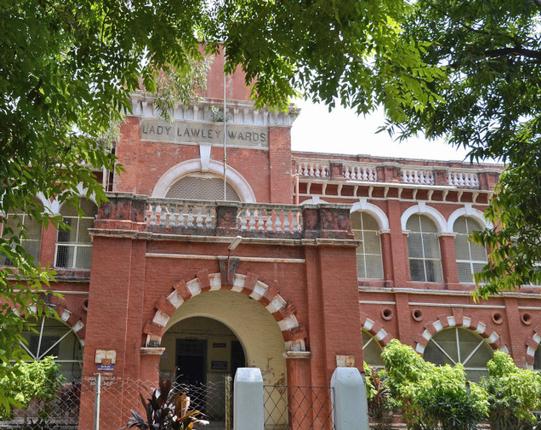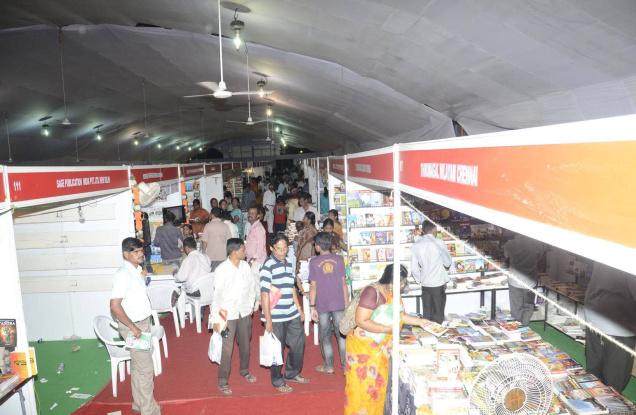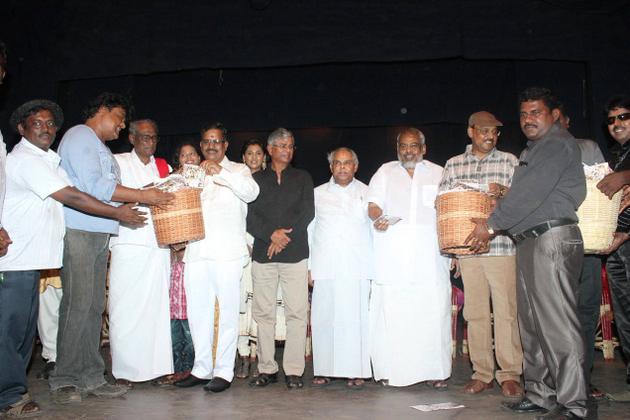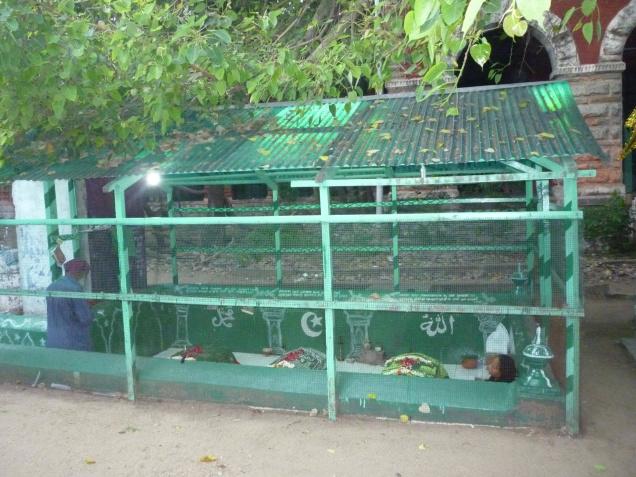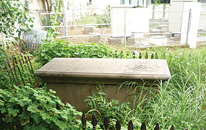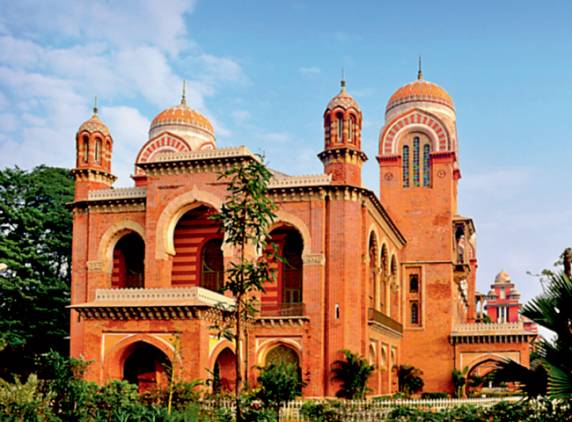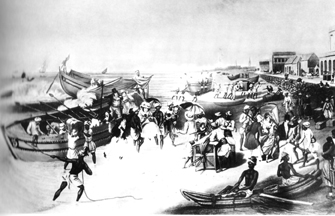
The mussoolah boats of old Madras.
Known better as the ‘Blind Traveller’, James Holman is a 19th Century writer whose travelogues offer fascinating details about southern India and Ceylon: e.g. ‘Panvarypank tank, one of the largest in the Carnatic’, ‘the dilapidated palace of Nabob of Arcot’, ‘a tour of Vollore Fort which housed the King of Kandy’, ‘the remaining relatives of Tippoo Saib, consisting of one of his wives, and several children’, ‘oranging gardens at Laulpett’, ‘detailed record of the Moharram festivities running into many pages with a bit of history outlining the origins of Moharram’, etc.
Holman was born in Exeter, England, in 1786 and volunteered to serve in the Royal Navy in 1798. Although he turned fully blind by 1811, due to an illness affecting his joints first and, later, his vision, Holman disliked leading an inactive life. He toured on the pretext of health and higher studies between 1819 and 1832. It is said that Holman’s notes inspired Charles Darwin to study the flora of the Indian Ocean region. Holman was elected a Fellow of the Royal Society. He died on July 29, 1857.
The following jottings are from one of four volumes that were intended for publication as a series. Holman’s travels to and in Madras are described in Volume III: Travels in Madras, Ceylon, Mauritius, Cormoro Islands, Zanzibar, Calcutta, etc. etc. (1840; George Routledge, London).
Holman in this volume provides “a most accurate and complete description of the whole process of making the chunam“, which Madras has been famed for. Much of what Holman has published is based on hearsay, as his vision was impaired; however, he neither permits this disability to impede his travel nor his experiences. Chunam is a mixture of burnt-lime and river sand with sufficient quantity of water. Burnt-lime is derived from sea-shells that are well washed and cleansed, after which their sulphur compounds are removed using charcoal.
Writing about the chunam production methods for single and multiple wall coatings, Holman explains it all in detail: process of preparing chunam with river sand and water, “wooden stick shod with iron” (similar to the ulakkai used in separating rice from husk) to beat this mixture, flat wooden rule to level the coating, crystal or smooth stone rubber to smoothen the surface, Bellapum powder (soapstone or steatite, the mineral lapis ollaris, popularly known as the talc) sprinkled “to increase . . . whiteness and lustre.” We come across the traditional curd [tayir], while he lists the ingredients for the three coats: a mixture of four parts of lime with one part of white sand and “white eggs, tayir, and ghee (butter)…”.
Speaking highly of the chunam produced in Madras, Dr. James Anderson, founder of the Saidapet Nopalry and Anderson’s Garden in Nungambakam, claims, in a series of letters to the Editor of Recreations in Agriculture, Natural History, Arts and Miscellaneous Literature (1799), that “… it is universally admitted the chunam of Madras is of a superior quality to any other in India.” Running to 12 pages, Dr. Anderson responds to several questions, raised by one Dr. Scott of Bombay, on Madras chunam. In one explanation, Anderson refers to talc material as “balpum of the Tamuls” – balpum or bellapum – a term very much in vogue among primary school children of rural Tamil Nadu.
No wonder Holman was so fascinated, amongst other things, with Madras chunam. Long famed for its marble-like finish, chunam plaster (made from either limestone or sea shells), preferred for its durability, was used to whitewash the house walls. With the arrival of modern paints and painting methods, this long tradition has lost many ardent supporters as the preparation of chunam, depending on the application, is a time-consuming and resource-intensive process.
Holman’s voyage to Madras recorded in Volume III starts with his setting sail from Trincomalee, Ceylon, on May 13, 1830, crossing Negapatam and Cuddalore before anchoring in Pondicherry on May 15th. On the merchandise exported, he notes: “The principal articles are … indigo and blue cotton cloth …, the latter is sent in great quantities to Bordeaux, from where it is taken to Senegal, and the West Indies islands for the use of the negroes.” He goes on to outline the “native mode of dyeing blue cloth as practised at Pondicherry,” and the “several sugar plantations,” which were laid out about three years before his visit and which “have proved very successful.”
Having reached Madras by the Brigate Margaret, to get to the shore he had to take amussoolah boat that is used for landing on the beach. “These boats possess a flat bottom, sewn together with coir-yarns, and the seams are crossed with a wadding of coir.” He mentions that he was pursued by the boatmen shouting “boxis sahib” (boxis =baksheesh).
On June 2, 1830, he travels to Bangalore in a palanquin lent by Mr. Dunlop, a Madras Magistrate. On his way to Bangalore, near Conjeevaram, Holman and the Collector (of Conjeevaram?) Mr. Cotton join the “grand procession from the great pagoda in Little Conjeevaram to the resting place for the idol at the further end of Great Conjeevaram.” Greeted with a “chaplet of flowers”, Holman was permitted to “examine their musical instruments, as well as the costume of one of the young dancing girls”. A week’s sojourn in Bangalore proved a relief to Holman because of the salubrious climate: “[the climate] was so like that of our own country that with closed curtain (it was easy) to believe ourselves at home in ‘merry’ England.”
Back in Madras, Holman comes under the magical spell of “fine Mulligatawny soup for the internal coat of the stomach”, but regrets that he could not get its recipe. Holman’s itinerary is such that he finds himself in Madras in peak summer and the sweltering heat does not escape his attention either. In his journal, dated June 30, 1830, Holman states: “Weather was so hot that no one thought of going out of doors except upon urgent business… apartments were spacious and kept cool with tatties (possibly made from vetiver roots and hung along windows as curtains), so that a very comfortable temperature was maintained within doors during the heat of the day…”
He writes of the introduction of punkahs to Madras: “… said to be the invention of Mr. Speke, a Bengal civilian, about fifty years ago, and was first introduced at Madras in 1803 by two gentlemen from Calcutta.”
On Fort St.George and its neighbourhood, Holman refers to Black Town, known to the natives as ‘Motel Pettah‘ (Muthialpet), Thieving Bazaar (Holman refers to it so because“every article that is stolen in Madras being brought here for sale… any particular robbery takes place, the government peons are sent there…”), two ‘respectable hotels’ (TheReston’s on the Esplanade, and the Nirden), the three gates leading out of the Fort, the ‘delightful village’ of Ennore, public establishments, and government buildings on First Line Beach; also, the numerous churches of established religions, and pagodas. He concludes his tour of Madras with a note on how one Colonel Boardman, in 1827, with Munro’s permission, built a bazaar near Palavarum and “the subsequent event of this market and surrounding area being known after this colonel.” I wonder whether this area is still known after Boardman!
source: http://www.MadrasMusings.com / by M. Ramanathan / Vol. xx11, no.13 / October 16-31, 2012

